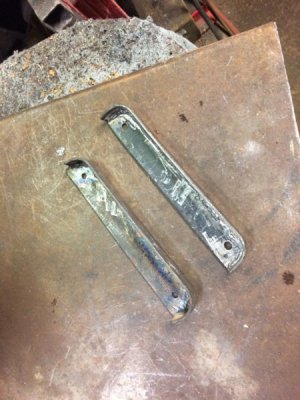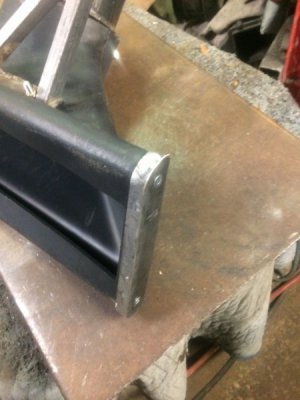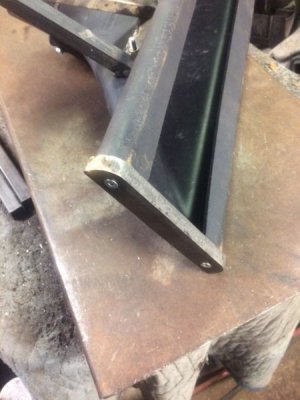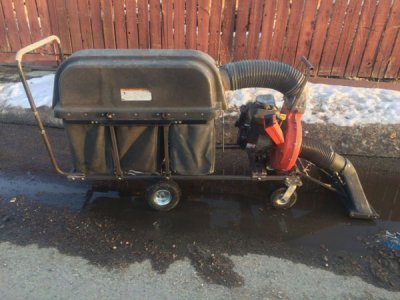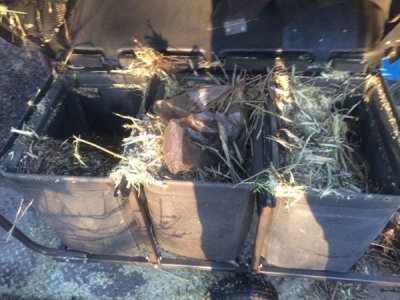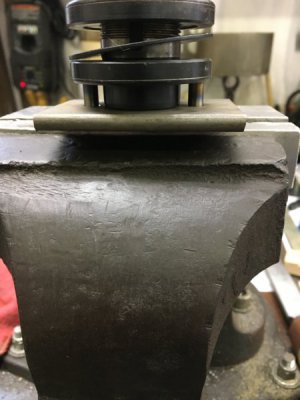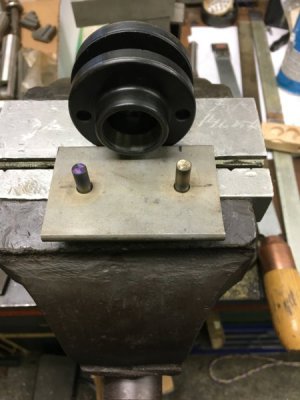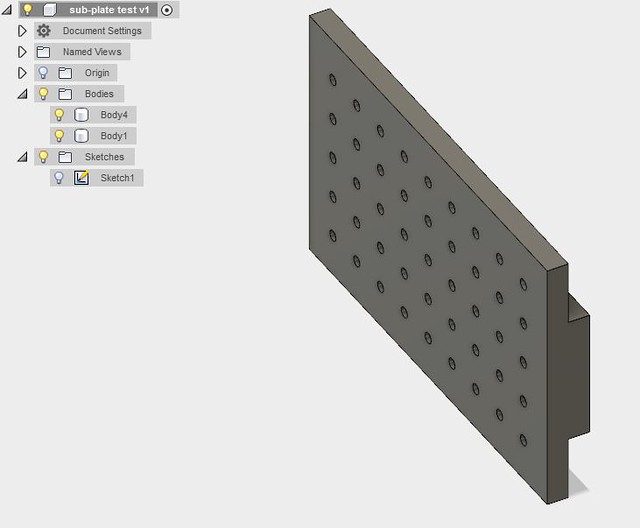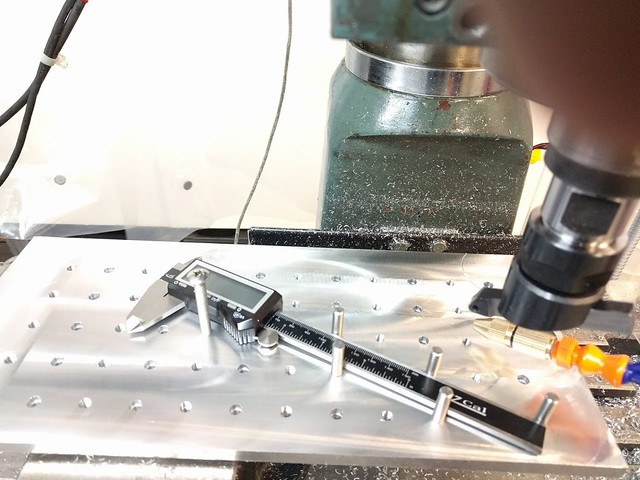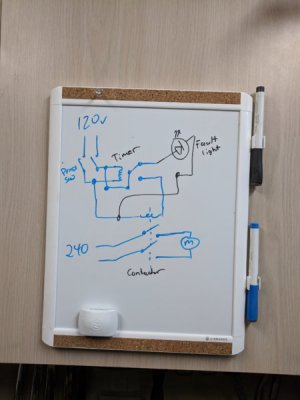- Joined
- Nov 14, 2014
- Messages
- 851
Built up a 20 gal electrolysis tank out of a Home Depot plastic storage tub. ended up using a battery charger running through a spare 12v marine battery, then jumped to anodes and cathodes in the tub. After much experimenting I derusted 16 miniature cast iron railroad wheels and four cast steel Bettendorf style trucks. Took the better part of a week to process all the parts. Bit of a challenge doing 6 of the wheels at a time, in series. Burned out two el cheapo power supply’s and found I needed to add a second positive charge collection plate to increase my anode surface area. But the end product came out pretty well. A lot better than standing in a cloud of grinding wheel rust dust day after day.
Final step was to run each piece through a wire wheel grinder to get rid of the gray oxide residue produced by the electrolysis , and then paint the wheels with Ospho (phosphoric acid) to kill the flash rusting and add a protective layer to the newly cleaned wheels. Latter in the summer I need to bore out the axle diameter, make up and sweat on new axles and bearings and remount to the trucks, prior to building up a couple of riding cars for my backyard RR.
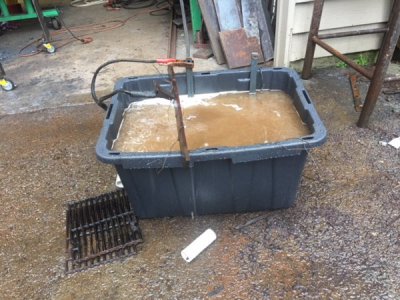
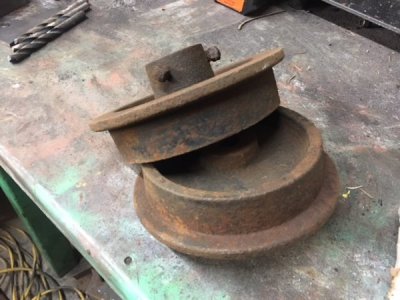
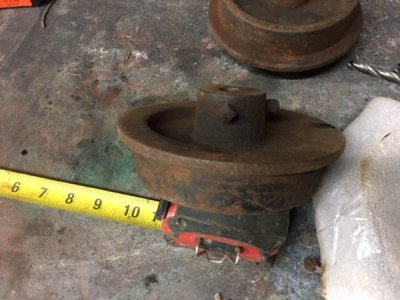
F
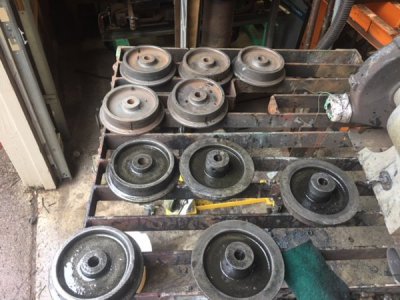
Here’s a couple of more photos of the set up and the 3” scale trucks.
Frame with wheels to hold the immersion bucket:
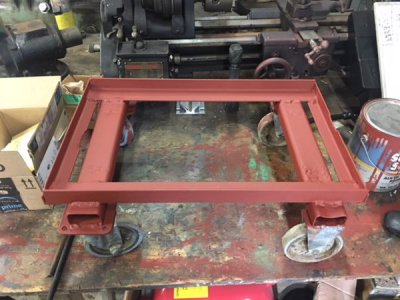
Anode plates and cathode rack . The idea behind the rack was to bond multiple pieces to the cathode lead and derust stuff in volume. Didn’t really work like I hoped. Turns out better to hang each piece in the bath with wire and run the lead ends up to the primary negative lead coming off the power source. Maybe make a power bus at the point to run. Ultiple wires down to the work pieces.
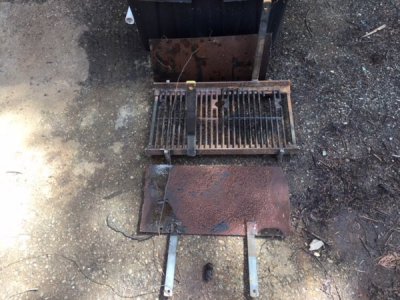
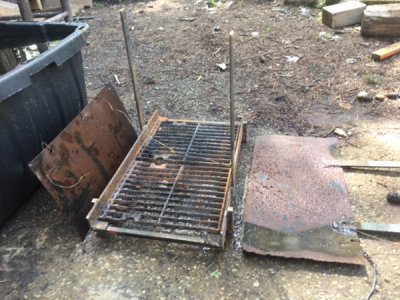
Picture of the finished 2.5” scale trucks.
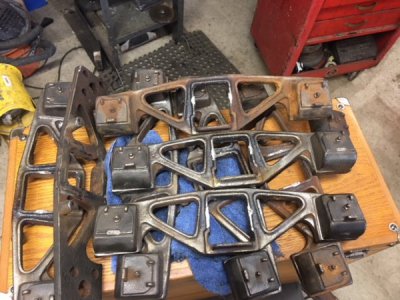
These show some milling marks where I faced off stubs of welded bolsters that some previous owner fab’d up out of 3” ship channel (cross pieces). I cut the bolsters off the frames with a plasma cutter and had to clean up the blobs of melted steel and stub ends. A lot more machining on the back side of these frames. The bolsters are supposed to be loose in the sideframes to allow a certain degree of vertical and lateral movement to accommodate unevenness in the track bed. Not supposed to be welded into a rigid box frame shape, as these were. But now, good enuf for workin on the railroad!
Glenn
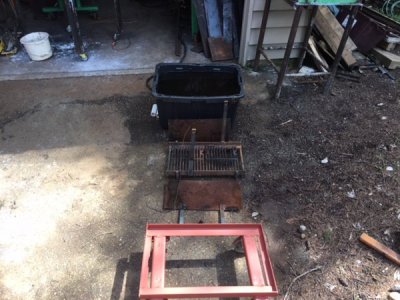
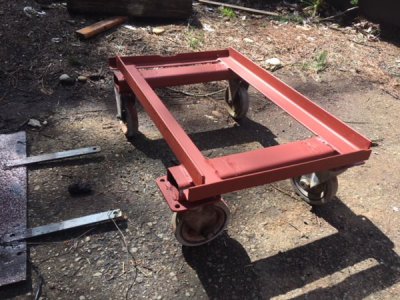
Final step was to run each piece through a wire wheel grinder to get rid of the gray oxide residue produced by the electrolysis , and then paint the wheels with Ospho (phosphoric acid) to kill the flash rusting and add a protective layer to the newly cleaned wheels. Latter in the summer I need to bore out the axle diameter, make up and sweat on new axles and bearings and remount to the trucks, prior to building up a couple of riding cars for my backyard RR.



F

Here’s a couple of more photos of the set up and the 3” scale trucks.
Frame with wheels to hold the immersion bucket:

Anode plates and cathode rack . The idea behind the rack was to bond multiple pieces to the cathode lead and derust stuff in volume. Didn’t really work like I hoped. Turns out better to hang each piece in the bath with wire and run the lead ends up to the primary negative lead coming off the power source. Maybe make a power bus at the point to run. Ultiple wires down to the work pieces.


Picture of the finished 2.5” scale trucks.

These show some milling marks where I faced off stubs of welded bolsters that some previous owner fab’d up out of 3” ship channel (cross pieces). I cut the bolsters off the frames with a plasma cutter and had to clean up the blobs of melted steel and stub ends. A lot more machining on the back side of these frames. The bolsters are supposed to be loose in the sideframes to allow a certain degree of vertical and lateral movement to accommodate unevenness in the track bed. Not supposed to be welded into a rigid box frame shape, as these were. But now, good enuf for workin on the railroad!
Glenn


Last edited:


